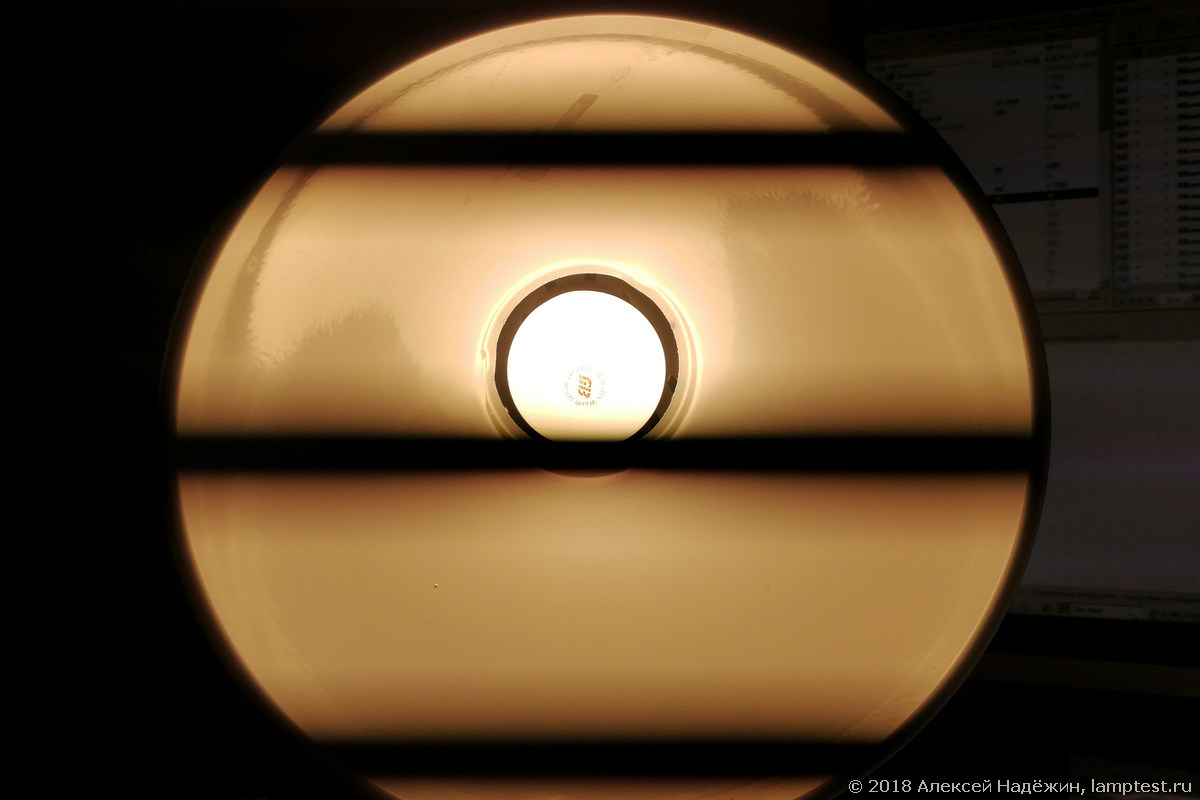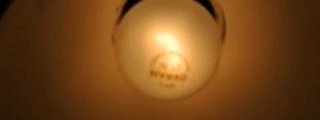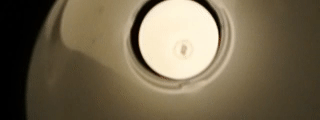See the ripple
I often write about the ripple of bad LED lamps (and now also about the ripple of the backlight of TVs). Let me remind you that the pulsation of light can lead to eye and brain fatigue, cause headaches and lead to an exacerbation of nervous diseases.
To determine the pulsation of light, many use smartphones' cameras - if the light pulsates, stripes run across the screen, and the blacker they are, the larger the pulsation.

But this is only an indirect "look at the pulsation" - we see the interference between the pulsation of light and the work of the electronic shutter of the camera. On some smartphones, the bands may not be due to software suppression of pulsations.
Today I will give you the opportunity to see the pulsation directly as it is.
With the help of a camera shooting at 1200 frames per second, I recorded a ripple of light from an ordinary incandescent lamp of 25 W (for incandescent lamps, the lower the power, the greater the ripple) and the poor LED lamp.
I play video at 10 frames per second, so I get a slowdown of 120 times.
Incandescent lamp:

The filament of the incandescent lamp does not have time to cool down, so the ripple is small - the pulsation coefficient is 23%. This means that the brightness minimum is only 23% less than the maximum level. Such a pulsation is almost imperceptible by the eyes and there is no harm from it.
And here so the bad LED lamp shines.

100 times a second the lamp goes out completely and then it lights up again. Ripple factor 100%.
Such a ripple is annoying. It is clearly visible with side vision and with a quick glance (objects in the field of view "break up" due to the stroboscopic effect). It is from such a pulsation of light that eyes get tired and a headache can hurt.
Fortunately, pulsating lamps are becoming less and less on the market. Lamps with the usual E27 bases are now almost all without pulsation, pulsating lamps with E14 bases are still found (most often filament candles and balls). Unfortunately, more than half of the LED micro bulbs with a G9 base have a 100% ripple (it is very difficult to place a good driver with a smoothing capacitor in a tiny package).
Never use a lamp in a living area with a visible pulsation of light. You can check for the presence or absence of a ripple using either a smartphone or a regular pencil .
© 2018, Alexey Nadyozhin
To determine the pulsation of light, many use smartphones' cameras - if the light pulsates, stripes run across the screen, and the blacker they are, the larger the pulsation.

But this is only an indirect "look at the pulsation" - we see the interference between the pulsation of light and the work of the electronic shutter of the camera. On some smartphones, the bands may not be due to software suppression of pulsations.
Today I will give you the opportunity to see the pulsation directly as it is.
With the help of a camera shooting at 1200 frames per second, I recorded a ripple of light from an ordinary incandescent lamp of 25 W (for incandescent lamps, the lower the power, the greater the ripple) and the poor LED lamp.
I play video at 10 frames per second, so I get a slowdown of 120 times.
Incandescent lamp:

The filament of the incandescent lamp does not have time to cool down, so the ripple is small - the pulsation coefficient is 23%. This means that the brightness minimum is only 23% less than the maximum level. Such a pulsation is almost imperceptible by the eyes and there is no harm from it.
And here so the bad LED lamp shines.

100 times a second the lamp goes out completely and then it lights up again. Ripple factor 100%.
Such a ripple is annoying. It is clearly visible with side vision and with a quick glance (objects in the field of view "break up" due to the stroboscopic effect). It is from such a pulsation of light that eyes get tired and a headache can hurt.
Fortunately, pulsating lamps are becoming less and less on the market. Lamps with the usual E27 bases are now almost all without pulsation, pulsating lamps with E14 bases are still found (most often filament candles and balls). Unfortunately, more than half of the LED micro bulbs with a G9 base have a 100% ripple (it is very difficult to place a good driver with a smoothing capacitor in a tiny package).
Never use a lamp in a living area with a visible pulsation of light. You can check for the presence or absence of a ripple using either a smartphone or a regular pencil .
© 2018, Alexey Nadyozhin
